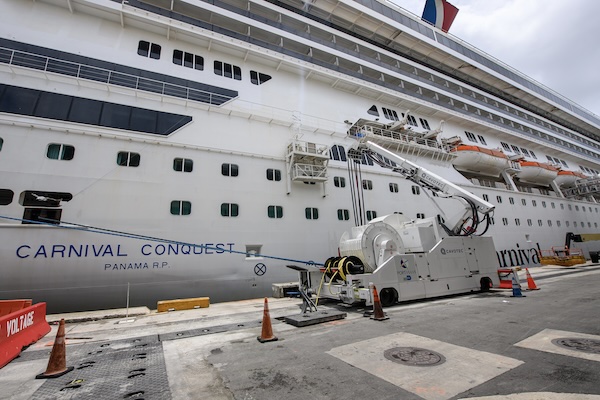The cruise industry is at a pivotal point concerning environmental responsibility. As cruise lines advance in sustainability, ports lag in the necessary infrastructure.
Shore power emerges as a critical solution, allowing ships to use local electricity instead of onboard fuel while docked. Yet, the implementation remains inconsistent across regions.
Current Status of Shore Power Capability
Ports are increasingly seen as essential components in reducing the cruise industry’s environmental impact. Shore power, the ability for ships to plug into a land-based power grid while docked, is pivotal in this effort. However, significant discrepancies exist between cruise lines and ports regarding the availability and implementation of this technology.
Carnival Corporation’s Initiatives and Achievements
Carnival Corporation, a leader in the cruise industry, has made substantial progress in equipping its fleet with shore power capabilities. Currently, 67% of its global fleet, comprising 64 ships, can utilise shore power. This achievement represents a significant milestone, as it exceeds Carnival’s 2030 target seven years ahead of schedule. As part of a continued commitment to sustainability, Carnival has partnered with ABB Group, a Swiss technology company, to equip an additional 30 ships with this capability in the coming years. Of particular note is PortMiami, which has emerged as a pioneering port by offering five berths with shore power capabilities.
Challenges Facing Port Infrastructure
Despite advancements by cruise lines, ports worldwide have been slower to adopt shore power technology. Only 2% of global cruise ports currently support this initiative, creating a bottleneck in the industry’s efforts to reduce emissions. The gap between the number of cruise ships equipped with shore power and the ports that can accommodate them highlights a pressing need for investment in port infrastructure.
Environmental Implications and Industry Leadership
The environmental benefits of shore power are undeniable, as it allows ships to turn off their engines while docked, significantly reducing greenhouse gas emissions. Carnival’s Chief Executive, Josh Weinstein, underscores the importance of integrating shore power in ports as a critical environmental strategy: “Using shoreside electricity to power our ships in port is an integral part of our global strategy to reduce greenhouse gas (GHG) emissions and minimise our environmental footprint.” This statement clearly outlines Carnival’s commitment to sustainability and underscores the industry’s leadership role in advocating for environmental responsibility.
PortMiami’s Pioneering Role
PortMiami has set a precedent on the US eastern seaboard by becoming the first major cruise port to offer shore power connections across five berths. The Carnival Conquest will be the first ship to utilise this setup, drawing power from the local electric grid to operate its onboard systems. This development marks a crucial step toward broader adoption of shore power and illustrates PortMiami’s role as a frontrunner in embracing sustainable practices.
Future Prospects and the Need for Collaboration
To bridge the existing infrastructure gap, a concerted effort between port authorities, cruise lines, and technology providers is essential. Investment in infrastructure must be prioritised to ensure that more ports worldwide can facilitate shore power connections. This collaborative approach will play a vital role in advancing the cruise industry’s sustainability goals and reducing its environmental impact.
Conclusion
Addressing the disparities in shore power adoption between cruise lines and ports is crucial for achieving the industry’s sustainability objectives. Greater investment and partnership are needed to expand port infrastructure. Such efforts will enable more widespread use of shore power, thereby enhancing the environmental benefits and supporting the cruise industry’s commitment to a greener future.
Bridging the gap in shore power infrastructure is essential for the cruise industry’s environmental targets. Collaboration and investment remain key.
A focused approach in expanding shore power-capable ports will enhance sustainability efforts, marking a significant step towards reducing emissions.

